It seems that every year as fall approaches, we end up capturing and bring home a wild honey bee hive or 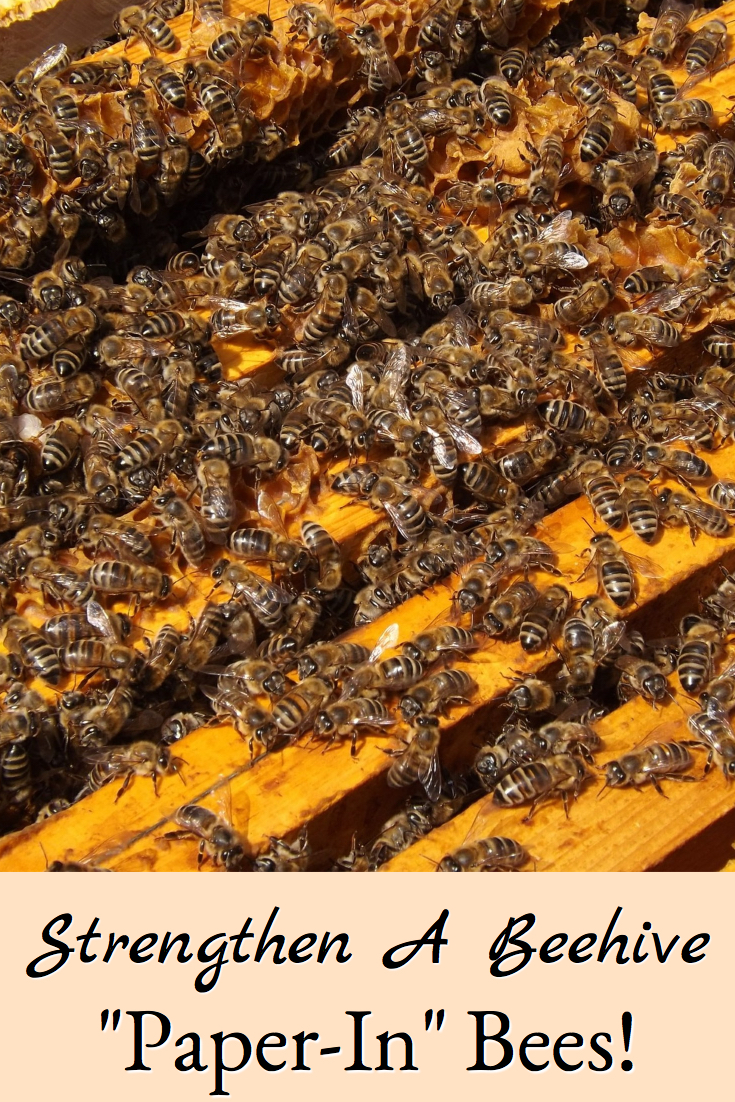
When these wild swarms are added in early fall, we’re often concerned that their hives won’t be strong enough to survive an Ohio winter because they have too little honey stored and too few bees in the hive after swarming.
To survive winter in Northeast 0hio, a hive needs to be around 35,000 bees strong going into winter and have about 70 pounds of honey stored away.
One way to help a hive out is to add more bees from another stronger hive. However, the honey bees from one hive will not immediately accept the honey bees from another hive – they will try to kill them and force them out because they don’t smell like they belong to their hive.
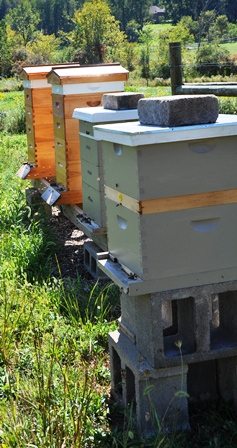
New Swarm Hive (1st Gray Hive) In Apiary
But if the resident honey bees can be prevented from getting to the added bees until the “new” bees smell like the hive, then they won’t destroy them. One way to achieve this is by “papering in” a brood super ( a box full of frames filled with young bees) taken from a stronger hive (the one on the far end in the picture above).
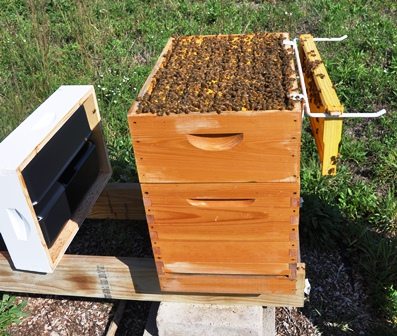
Removing Brood Frames from a Strong Hive
To give this small wild hive a chance, we removed brood filled frames from the strong hive (shown above) and put them into a “brood super” (shown below) to put on the wild hive. This will provide the wild hive with both additional mature bees and young brood that will hatch out and join the hive.
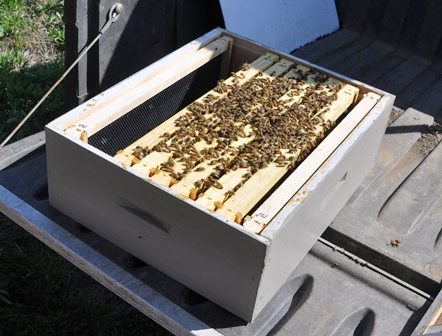
Adding Brood Filled Frames to a Super
When taking frames from the strong hive, we had to be very careful not to take a frame with the queen on it – you have to make sure that the queen remains in her hive so that it will stay strong and prepare well for winter too.
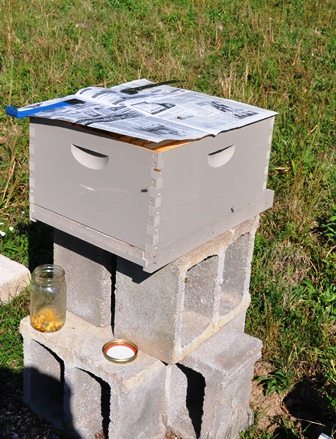
Paper Added That New Super Will Sit On
The bees taken from the strong hive would fight with the bees in the wild hive if they were just inserted without any barrier – so a paper barrier is installed between the supers (that’s why it’s called “papering in”).
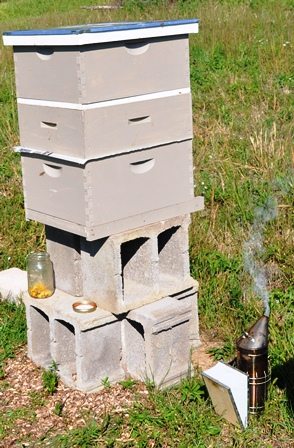
The photo above shows the wild hive after the brood super has been “papered in” – the bees will chew through the paper and mingle eventually, but by the time they do that, they’ll be used to each others scent and won’t fight.
By adding the super to the wild hive, we’ve hopefully given them additional bees and brood so they’ll be able to make more honey and have both enough bees and honey to survive winter.
Heidi says
How many sheets of newspaper do you use?
Lesa says
Hi Heidi, just one.
Vicki says
How long until they chew through or you let them out, I don’t see a separate entrance?
Lesa says
HI Vicki, it usually takes a couple of days for them to chew through the paper, and there is no separate entrance.